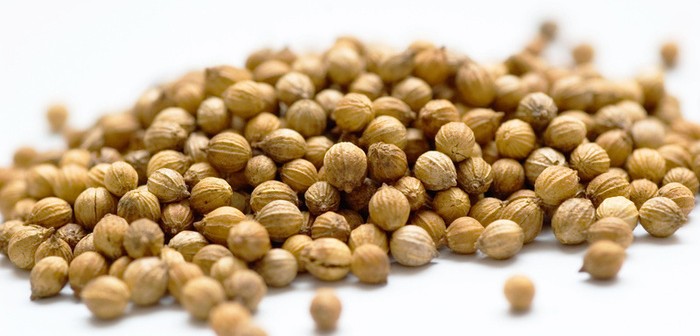Many people are confused about coriander and cilantro – Are they the same? The answer is a clear no, but they do have something in common – they both come from the same plant. Coriander is the dried ripe seeds from the pink flower of the coriander plant, while cilantro, a commonly known herb, is the fragrant leaves. Coriander seeds are small and spherical, and generally come in two varieties. Light brown coriander has a warm aromatic flavor, while green, or Indian coriander has a fresher, cleaner taste. The coriander plant is similar in appearance to parsley, although the two plants taste entirely different. Coriander seed and essential oil may offer a variety of health benefits.
Tastes
Coriander seeds are light and sweet with a warm hint of citrus, but also slightly peppery.
Pairing Spices
Allspice, cardamom, chili, cinnamon, cloves, cumin, fennel seed, garlic, ginger, pepper.
Complements
Apples, citrus fruit, potatoes, mushrooms, pepper, vegetables, lentils, poultry, pork, fish, stew, curries, harissa, tabil, dukka, masalas.
Coriander Seed Uses
Coriander spice is mild and can be used in large quantities in cooking. The fragrance and flavor of coriander seeds become more pronounced when they are roasted and ground. One of the reasons for coriander’s popularity is its versatility. It mixes well with other spices especially cumin, and is a key component in many classic regional spice blends. From Indian masalas, Middle Eastern baharat blends, Georgian Khmeli-suneli, Iranian advieh, to North African tabil and ras el hanout, coriander is an international favorite.
Coriander is one of the most useful spices in the kitchen. It complements a wide variety of vegetables, stews, and soup, and blends well with fish, sausage, smoked meats and game. Dry roasted coriander is one of the building blocks of many curry powders and its pleasant citrusy flavor has made it a favorite pickling spice in Europe and US. This versatile spice also pairs well with autumn fruits such as apples, plums, and pears, and is much used as part of sweet spice mixes as well as in cakes, breads and other baked foods.
Buying and Storing
Buy fresh coriander seeds that have a bright color. Fading is a sign of age or over exposure to light. Whole coriander seeds are brittle and easy to grind. It is best to purchase whole seeds and grind right before use as the fragrant, volatile flavor notes of ground coriander seed evaporate easily. Always store spices in an airtight container away from direct light
Coriander Health Benefits
Coriander seeds contain antioxidant properties and have many medical uses. They are often employed in remedies for abdominal complaints:
- Irritable Bowel Syndrome (IBS) – A chronic digestive malady which results in pain, cramping, constipation, and diarrhea.
- Digestion Issues – Loss of appetite, bloating, flatulence, stomach aches, hernia, bowel, spasms, and intestinal gas.
- Chronic constipation.
Coriander essential oil is extracted from the seeds. Coriander seed oil is a useful remedy for:
- Relieving inflammatory skin disorders such as eczema, psoriasis and rosacea.
- Lowering “bad” LDL cholesterol while raising “good” HDL, which decreases the risk of heart disease.
- Protecting the liver and increasing its regenerative power.
- Preventing yeast infections.
In culinary usage, coriander is known to prevent food positioning.




